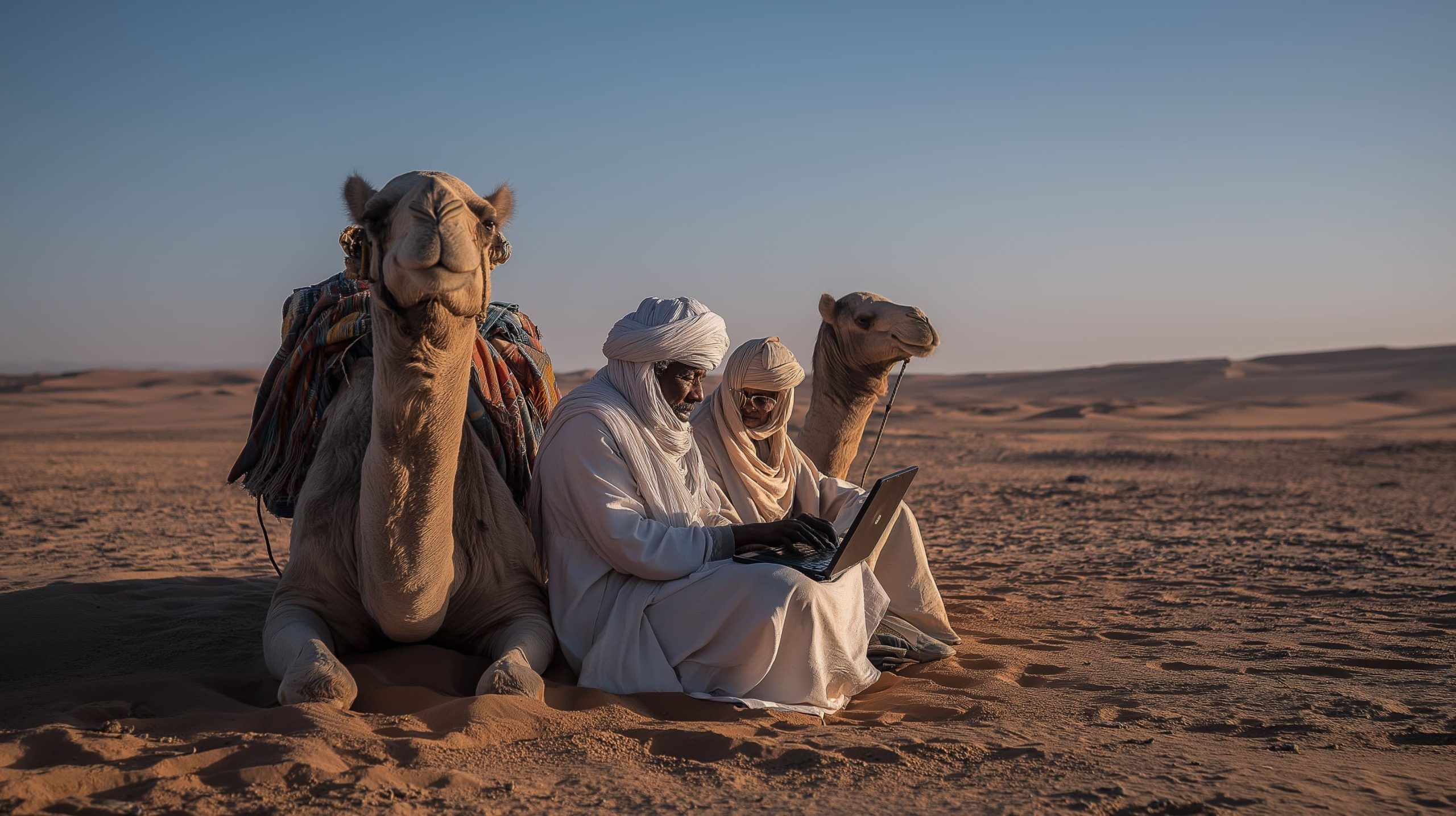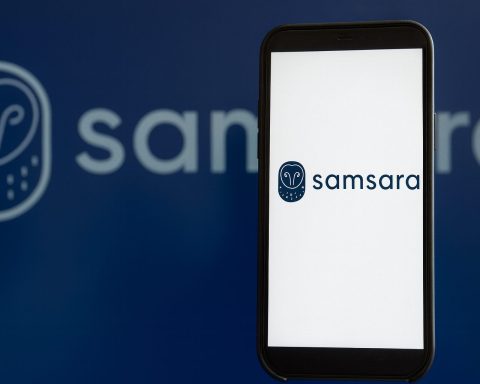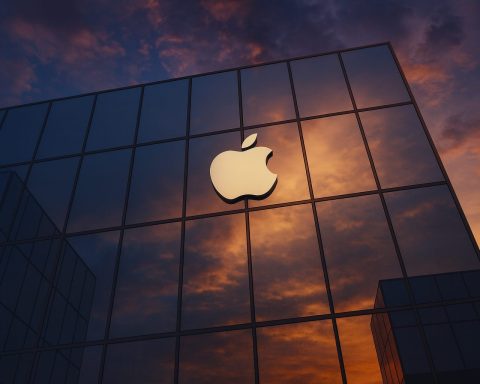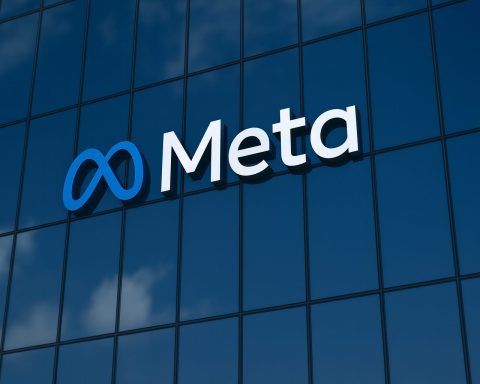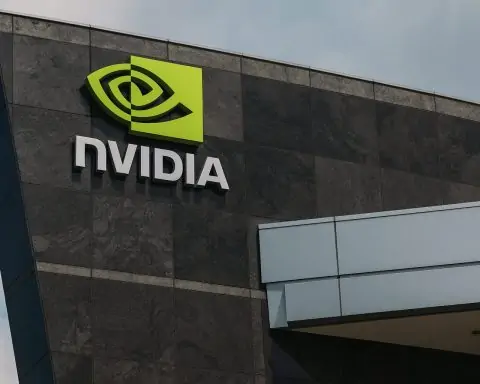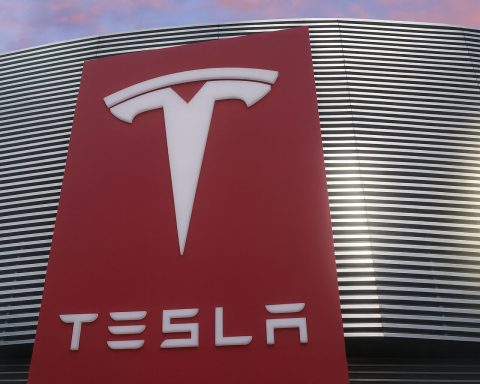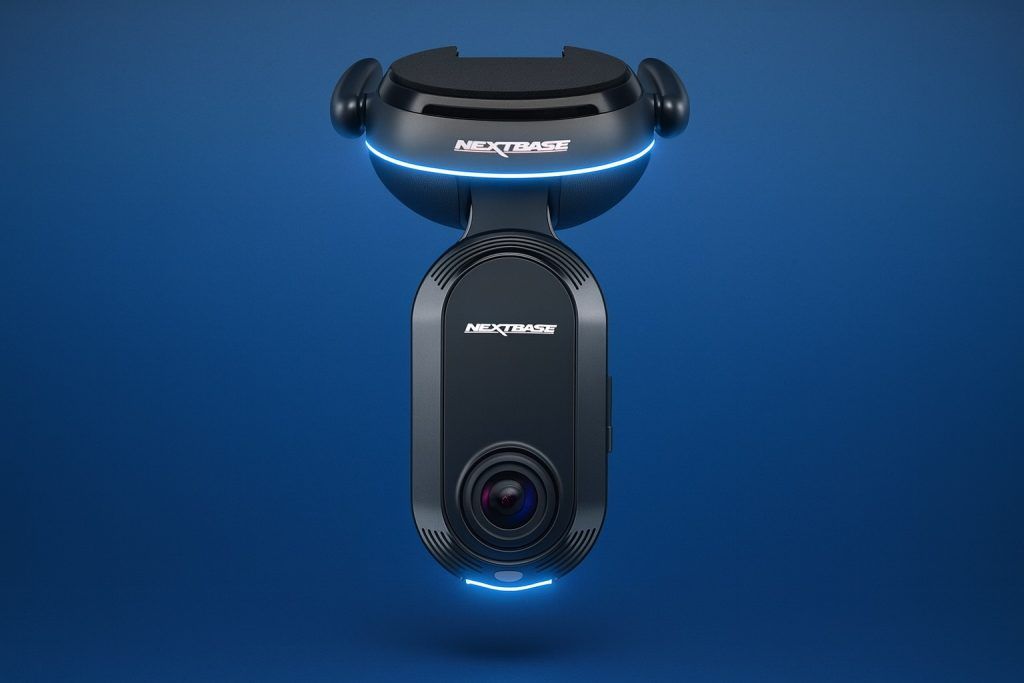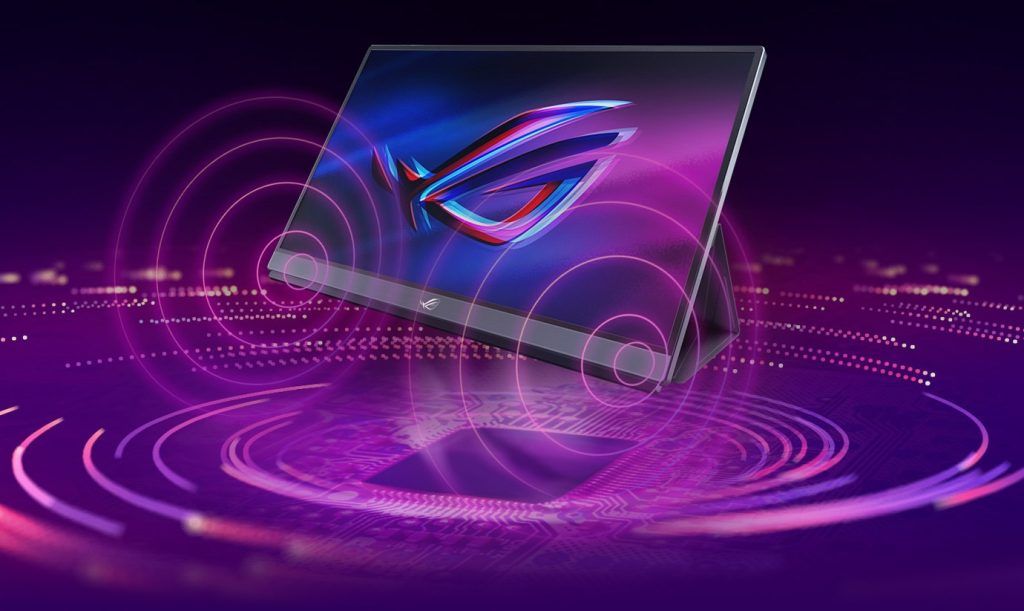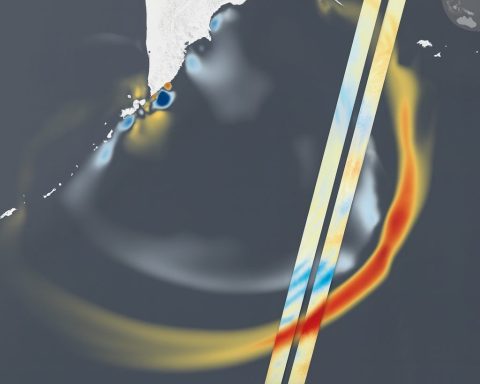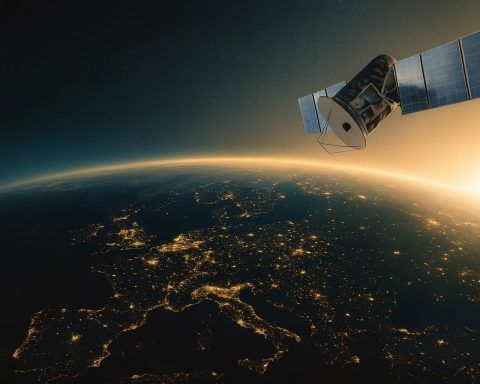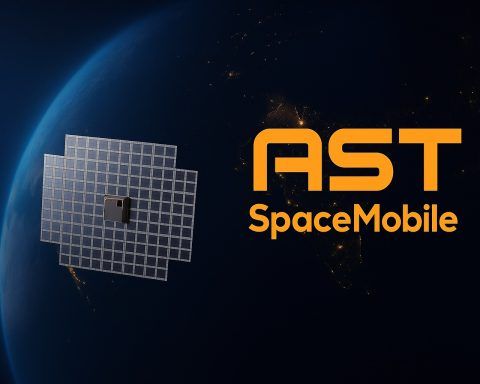- As of January 2024, Western Sahara had about 398,000 internet users, roughly 67.1% of the population, up by 65,000 users (a 19% increase) from 2023.
- By early 2024 about 87% of the population lived in urban areas (Laayoune, Dakhla, Smara, Boujdour), while about 32.9% remained offline, concentrated in rural or nomadic communities.
- The median fixed broadband speed in early 2024 was about 19.9 Mbps, a 30% year-over-year improvement but still behind global averages.
- Over 57% of Western Sahara’s population uses social media, totaling around 341,000 people, with social media penetration near 58%.
- Connectivity in Western Sahara is dominated by Maroc Telecom (IAM), Orange Maroc, and Inwi, with no independent local ISPs and the .eh domain reserved.
- Regulatory and numbering oversight is exercised by Morocco’s ANRT, so residents use Moroccan SIM cards and .ma or generic domains.
- In the Polisario-controlled eastern Sahara and refugee camps near Tindouf, connectivity relies on Algerian networks and VSAT since about 2010, with slow, limited access.
- Starlink negotiations ran 2023–2025, and by mid-2025 Rabat was close to authorizing SpaceX to operate in Western Sahara, offering 100–200 Mbps download speeds with 20–40 ms latency and equipment costs around $600 plus $80 monthly, with subsidies up to 2,500 MAD.
- OneWeb is now part of Eutelsat and Morocco aims to license it for enterprise and backhaul use, while in 2023 Morocco partnered with Thales Alenia Space to develop a new high-throughput satellite covering Africa.
- A West Africa 8,600 km submarine cable was completed in 2021 with the Dakhla landing finalized by 2023, and fiber routes along the Atlantic coast from Agadir to Laayoune and Dakhla connect Western Sahara to Morocco’s core network and international cables.
Western Sahara – a sparsely populated desert territory disputed between Morocco and the Sahrawi Arab Democratic Republic (Polisario) – faces unique challenges in connecting to the digital world. The region’s political limbo and harsh geography have historically kept it on the margins of internet development. Basic telecom statistics weren’t even tracked separately for Western Sahara for many years due to its contested status [1]. Yet, as the internet becomes essential for economic growth, education, and activism, Western Sahara’s people are striving to get online. This report delves into the current state of internet access in Western Sahara, the providers and infrastructure (from Moroccan fiber optics to satellite dishes) that enable it, and the obstacles – political, geographic, and economic – that still hamper connectivity. It also compares Western Sahara’s digital landscape with its neighbors and highlights initiatives aimed at bridging the digital divide in Africa’s last colony.
Internet Access Overview: Coverage, Speed, and User Penetration
Internet use in Western Sahara has grown markedly in recent years, though it still lags behind the global average. As of January 2024, there were roughly 398,000 internet users in Western Sahara, representing about 67.1% of the population [2]. This is a dramatic rise – the user base jumped by 19% in one year (adding ~65,000 new users from 2023 to 2024) [3] – indicating rapid uptake of digital services even in this remote region. By early 2024, about 87% of Western Sahara’s people lived in urban centers (mainly the cities of Laayoune, Dakhla, Smara, and Boujdour), which helps explain the relatively high internet penetration, since urban areas have far better connectivity than the desert interior [4]. Conversely, the 32.9% of the population still offline are likely concentrated in rural or nomadic communities where coverage is sparse [5].
In terms of connection quality, Western Sahara’s speeds remain modest but improving. Median fixed broadband speed was about 19.9 Mbps in early 2024 [6], which, while a 30% improvement over the previous year, is still quite low compared to global averages. Fixed broadband options (like ADSL or limited fiber) are available primarily in major towns, and the majority of users access the internet via mobile networks. Mobile 3G/4G service covers most populated areas, so many Sahrawis go online with smartphones. However, the heavy reliance on older mobile broadband and copper-line DSL keeps typical speeds in the tens of Mbps. By comparison, Morocco’s national median fixed speed is higher (it ranked 96th globally in mid-2025), reflecting more widespread fiber deployment in the rest of the country [7]. In Western Sahara, the ongoing upgrades to 4G and introduction of fiber-to-the-home in city centers promise to boost speeds further, but as of 2024 the digital experience for many users is limited to basic broadband levels.
Despite these limitations, access is steadily expanding. Over 57% of Western Sahara’s population – about 341,000 people – use social media [8] [9], indicating that those who are online are quite engaged (especially via Facebook and WhatsApp on mobile phones). The fact that social media penetration is close to 58% suggests that a large share of internet users are using it to communicate and share information with the wider world, an important factor given the territory’s political isolation. Overall, Western Sahara has made strides in connectivity – two-thirds of its people now enjoy some form of internet access – yet it still trails well behind the 90%+ internet penetration seen in nearby Morocco. The following sections explore who provides this connectivity and how it reaches users across this challenging landscape.
Key Internet Service Providers (ISPs) and Networks
Because most of Western Sahara has been under Moroccan administration since the late 1970s, its internet and telecom services are essentially an extension of Morocco’s. Three main telecom operators – Maroc Telecom, Orange Maroc, and Inwi – dominate the market, mirroring their nationwide status in Morocco [10]. These companies have established a presence in Western Sahara’s cities, offering mobile and fixed services. For example, Orange Maroc (the Moroccan subsidiary of France’s Orange) lists multiple offices in the territory – including 7 in Laayoune, 1 in Boujdour, 1 in Smara, and 2 in Dakhla – underscoring that Western Saharan urban centers are integrated into these providers’ coverage maps [11]. Maroc Telecom (IAM), the former state monopoly, is the largest ISP and has built much of the core infrastructure. Orange Maroc and Inwi (a private operator part-owned by Zain) also operate cell towers, fiber links, and retail internet services in the region. Together, these three ISPs account for virtually all internet subscriptions, whether via mobile data plans, ADSL lines, or newer fiber connections.
Notably, there are no independent local ISPs specific to Western Sahara – the territory has no separate country-code domain (the ccTLD “.eh” remains reserved and unused) and no independent telecom regulator of its own [12]. All regulatory oversight and numbering (phone country code +212) are tied to Morocco’s National Telecommunications Regulatory Agency (ANRT). This means Western Saharan consumers use Moroccan SIM cards, Moroccan telephone area codes, and .ma or generic internet domains, and they fall under Moroccan telecom laws. In essence, from a network standpoint, Western Sahara is treated as part of Morocco’s “Southern Provinces.”
One exception to this Morocco-centric provider landscape exists in the sliver of Eastern Western Sahara controlled by the Polisario Front (often called the “Free Zone”) and in the refugee camps in Tindouf, Algeria. In those areas, Moroccan companies do not operate. Polisario authorities and the refugee camp administrators rely on Algerian networks and satellite links for communications. Mobile coverage from Algerian state carrier Mobilis now extends around Tindouf, meaning many refugees use Algerian SIM cards, and limited internet connectivity in the camps has been available since around 2010 via Algerian telecom infrastructure and VSAT satellite feeds [13] [14]. However, connectivity in the camps remains sparse and slow, often shared via community Wi-Fi points or internet cafés. Overall, within Western Sahara itself, Moroccan ISPs are the only game in town, delivering connectivity – but also enforcing Morocco’s rules on internet use.
The Role of Satellite Internet: Reaching the Unconnected
Satellite internet has emerged as a crucial lifeline for Western Sahara’s most isolated and politically sensitive areas. Traditionally, satellite links were used sparingly – for example, to connect remote military outposts, UN mission facilities, or mining operations where no other network was available. These legacy VSAT connections were expensive and slow (resembling dial-up or basic DSL speeds) [15], so they never reached a wide consumer base. However, new high-throughput satellites and low-Earth-orbit (LEO) constellations are poised to change that. In Morocco (and by extension Western Sahara), authorities now see satellite broadband as a key tool to achieve 100% coverage, especially for the final pockets of the population that terrestrial networks cannot economically serve [16].
The most headline-grabbing development is SpaceX’s Starlink, the LEO satellite service, which in 2023–2025 has been in talks with Morocco for a commercial launch. Starlink’s constellation blanketed North Africa from orbit by 2023, but it cannot sell service in Morocco/Western Sahara until licensed by Rabat [17]. Negotiations accelerated in late 2024, and by mid-2025 Morocco’s government – reportedly with direct involvement of the Prime Minister and royal palace – was close to approving Starlink to operate in Western Sahara [18] [19]. One sensitive point has been coverage of Western Sahara’s disputed territory: Starlink beams do not obey political boundaries, and reports suggest SpaceX specifically sought permission to serve Western Sahara, a move which raised political eyebrows [20]. Moroccan regulators appear inclined to allow it under their jurisdiction (treating the service as covering Morocco’s “southern provinces”), but the situation illustrates how even satellite internet is entwined with the sovereignty dispute.
If authorized, LEO satellite service could be revolutionary for Western Sahara’s connectivity. Starlink offers download speeds of 100–200 Mbps (with low latency ~20-40ms), comparable to 4G/5G or fiber [21]. For remote desert villages, nomadic encampments, or checkpoints along the vast border berm – places where building fiber or cell towers is impractical – a satellite dish could provide broadband literally overnight. Every corner of Western Sahara could theoretically come online, from the dunes of Smara province to the far southern fishing outpost of Lagouira. This “internet from the sky” also serves as a backup during political or natural crises: when Morocco suffered a major earthquake in 2023, Starlink units were brought in to restore communications in isolated areas [22]. In a region where authorities have at times imposed information blackouts or where infrastructure is vulnerable, satellites offer a resilient alternative path.
Beyond Starlink, other satellite initiatives are in play. OneWeb (now part of Eutelsat) is another LEO network Morocco aims to license, potentially for enterprise and backhaul use [23]. Additionally, Morocco is investing in its own satellite capacity – in 2023 a Moroccan company partnered with Thales Alenia Space to develop a new high-throughput satellite covering Africa [24]. Such projects could eventually provide additional bandwidth to Western Sahara or allow the government more control over satellite connectivity. Still, challenges remain: high costs (Starlink user kits cost ~$600 and $80/month subscriptions) mean only governments, businesses or well-off users can afford them without subsidies [25] [26]. But subsidies are indeed planned – Morocco has discussed aiding rural users with grants up to 2,500 MAD ($250) toward satellite internet costs [27]. In summary, satellite broadband is moving from a niche last-resort to a mainstream component of Western Sahara’s connectivity strategy, bridging the gap where ground networks stop. For ordinary Sahrawis in the desert interior or activists seeking an uncensored link to the outside world, these “satellite lifelines” may soon be transformative.
Political, Geographic, and Economic Challenges
Building internet infrastructure in Western Sahara comes with a tangle of challenges that go beyond technology. Politics looms largest: Morocco’s government tightly controls the region and views communications through a national security lens. Internet freedom is curtailed – Morocco is rated only “Partly Free” by Freedom House – and online censorship especially targets Western Sahara issues [28]. Websites or posts advocating independence or reporting on protests in Western Sahara often face blocking or removal. Local activists complain of an “information blockade,” with authorities surveilling online activity and cracking down on those who criticize the occupation [29]. Indeed, simply accessing independent Sahrawi news sites or sharing videos of demonstrations can bring police harassment. Unlike many conflict zones, Western Sahara hasn’t experienced complete internet shutdowns in recent years, but selective blackouts and throttling have been reported during unrest, effectively silencing local reporting. Meanwhile, foreign journalists, human rights observers, and even UN officials are frequently denied access to the territory, meaning much of the on-the-ground news must travel via citizen reporters on social media – a risky endeavor when the state monitors Facebook and WhatsApp closely.
Geography and demography are additional hurdles. Western Sahara is a vast swath of desert the size of Colorado, but with only about 600,000 inhabitants. Outside a few coastal towns, population density is extremely low. Rolling out fiber-optic cables or mobile towers across hundreds of kilometers of sand to connect nomadic communities or small villages is often not economically viable. The climate and terrain pose issues as well: equipment must survive sandstorms, high temperatures, and in some areas the presence of landmines left from past wars. Power supply is another limiting factor – beyond the cities, many areas lack a reliable electricity grid (the refugee camps, for instance, long ran on generators and solar panels [30]), complicating the deployment of cellular base stations or internet access points. The costs of infrastructure per user are extremely high in such conditions, so commercial operators historically focused on the cities and main highways. Even today, some remote parts of Western Sahara rely on older technologies (2G GSM or satellite phones) if they have any service at all.
The economic context also affects internet development. Western Sahara’s economy is underdeveloped and heavily subsidized by Morocco. Unemployment is high, and poverty is prevalent, especially among the Sahrawi indigenous population. This limits consumer purchasing power for internet services. A high-end fiber or satellite broadband plan costs more than many people’s monthly income, so adoption can stall due to affordability, even if the technical coverage is there. Morocco’s government has tried to address this by treating telecom in Western Sahara as a public service investment – pouring money into infrastructure (as part of its political strategy to integrate the territory) and keeping mobile data prices uniform nationwide. Still, the average Sahrawi household may find smartphones or computers and monthly broadband fees hard to afford, contributing to a usage gap. Literacy and digital skills gaps also play a role: with a largely young population but also many adults who had limited schooling, not everyone is equipped to take advantage of online opportunities even when connectivity exists. NGOs have noted the need for digital literacy programs in the Sahrawi communities to ensure the internet, when available, is actually beneficial for education and employment.
Lastly, the political status of the territory itself deters outside investment and aid that might otherwise bolster internet infrastructure. International development agencies and companies are wary of building projects in Western Sahara for fear of legal repercussions or political backlash (since the UN deems it a non-self-governing territory). This means Western Sahara doesn’t directly receive the kind of ICT development grants or loans that many African countries do. Instead, almost all major telecom improvements come via Moroccan state initiatives or military projects. The Polisario-run areas, on the other hand, depend on Algerian support and humanitarian aid, which have provided basics like radio networks and some internet to the refugee camps but cannot fund large-scale telecom networks in the territory. In sum, the quest to wire Western Sahara is intimately tied to the political conflict and harsh desert environment – factors that continue to slow progress and make internet access a struggle in more ways than one.
Regional Comparisons: Western Sahara vs. Morocco, Algeria, and Mauritania
To put Western Sahara’s connectivity in perspective, it helps to compare with its neighbors:
- Morocco: As the administering power, Morocco has far higher internet development. Morocco’s internet penetration was about 90.7% of the population by early 2024 [31] – one of Africa’s highest rates – with 34.5 million users online. Its citizens enjoy extensive 4G coverage, growing fiber-optic broadband in cities, and upcoming 5G rollout. By contrast, Western Sahara’s 67% internet penetration [32] lags well behind, roughly equivalent to where Morocco was a decade ago. The gap reflects Morocco’s greater wealth and investment in telecom. Still, Western Sahara is doing better than one might expect given its situation, with two-thirds online; this likely owes to Morocco extending its networks southward. In terms of speed and infrastructure, Morocco also leads: for example, many Moroccan cities now have fiber-to-the-home gigabit service, a luxury still rare in Laayoune or Dakhla. Morocco’s regulatory influence also means Western Sahara’s users benefit from some of the same content and services (e.g. popular Moroccan websites, e-government portals, etc.), but also face the same censorship policies imposed from Rabat.
- Algeria: To the east, Algeria provides a relevant comparison, especially since it hosts the Sahrawi refugee population. Algeria had about 33.5 million internet users in 2024 (72.9% penetration) [33], putting it in the same ballpark as Western Sahara percentage-wise. Algeria’s north (Mediterranean coast) is fairly well connected with 4G and fiber in cities like Algiers, but its vast Saharan interior suffers a digital divide – not unlike Western Sahara’s situation. Tindouf province (where the Sahrawi camps are) is one of Algeria’s least connected regions, though the government has worked to extend mobile coverage there. Algeria’s overall infrastructure (submarine cables, domestic fiber backbone, 3 mobile operators) is robust, but bureaucratic hurdles and censorship issues (Algeria also restricts internet content and has shut down networks during exams or protests) mean its digital progress is slower than Morocco’s. Western Sahara’s urban areas, under Moroccan systems, likely have better mobile internet service than comparable Algerian Saharan towns. That said, Western Saharans in the camps envy Algeria’s network at times – many refugees travel to Tindouf city just to get a stable internet connection. Algeria’s average speeds and access are improving (the country launched 4G earlier and is testing 5G soon), so in the long run an independent Western Sahara might have looked to Algeria for telecom partnership. For now, Western Sahara sits awkwardly between a highly connected Morocco and a moderately connected Algeria.
- Mauritania: To the south, Mauritania highlights how having a sovereign state doesn’t automatically translate to widespread internet. Mauritania’s population (4.9 million) is much larger than Western Sahara’s, but only 44.4% of Mauritanians were online in 2024 [34] – roughly half Western Sahara’s rate. In absolute terms, Mauritania had about 2.2 million internet users versus Western Sahara’s ~0.4 million [35] [36]. The low figures for Mauritania stem from poverty, low literacy, and minimal telecom infrastructure outside the capital Nouakchott and a few coastal cities. Much of Mauritania’s interior (the Sahara and Sahel regions) has very patchy connectivity, similar to Western Sahara’s rural emptiness. Interestingly, Western Sahara’s major towns are better connected than many places in Mauritania, thanks to Moroccan investment. For instance, Laayoune and Dakhla have fiber links and 4G cell coverage, whereas vast stretches of Mauritania rely on 2G or nothing at all. Even speeds tell a story: Mauritania’s median fixed internet speed is around 21 Mbps [37], on par with Western Sahara’s ~20 Mbps – both reflective of limited fiber penetration. However, Mauritania is planning improvements (it hosts part of the new Trans-African fiber lines and is expanding 3G/4G coverage), so it may catch up. Western Sahara, being tied into Morocco’s system, arguably has a head start in connectivity relative to its southern neighbor.
In summary, Western Sahara’s internet access, at ~67%, sits between the highly connected Morocco and the less connected Mauritania. It can be seen as above average for Sub-Saharan Africa (where internet use is about 40% on average) yet below North African standards. The comparisons underscore how crucial Morocco’s role has been – for better or worse, Western Sahara’s digital fate is linked to an advanced economy next door. They also highlight the potential: if Western Sahara were to achieve Moroccan-level connectivity, virtually the entire population would be online with high-speed service. That remains a distant goal, but ongoing projects could continue to narrow the gap with its neighbors.
Infrastructure Status: Fiber Optics, Mobile Networks, and Broadband Access
Western Sahara’s internet infrastructure has evolved from almost nothing in the 1990s to a growing mesh of modern fiber and wireless networks today. Fiber-optic backbone: Morocco has deliberately extended its fiber-optic backbone through Western Sahara as part of nationwide telecom development. As early as 2009, Maroc Telecom announced plans to lay fiber connecting the cities of Laâyoune and Dakhla (the two largest Western Saharan urban centers) onward to Nouadhibou in Mauritania [38]. This plan aimed to integrate Western Sahara into a trans-Africa communications link. In recent years, these efforts have materialized. A major milestone came in 2021, when Maroc Telecom completed the “West Africa” submarine cable – an 8,600 km undersea fiber system from Morocco down the West African coast to Gabon – and included a branching unit coming ashore at Dakhla [39] [40]. Work continued through 2023 to finalize the Dakhla landing, with French company Alcatel Submarine Networks laying cable in the coastal waters off Dakhla [41] [42]. This means Dakhla (and by extension all of Western Sahara, via terrestrial fiber up to Laayoune) now has a high-capacity fiber connection to international networks, reducing reliance on older microwave relays. Additionally, fiber routes along highways link Western Saharan towns to the Moroccan core network in the north. For instance, a fiber line runs along the Atlantic road from Agadir down to Laayoune and Dakhla, carrying internet and phone traffic seamlessly into Morocco’s transit hubs. The presence of fiber has greatly increased available bandwidth in Western Sahara – enabling, for example, 4G mobile data and broadband for businesses – and improved reliability (though cuts can still happen if cables are damaged in the desert). Essentially, Western Sahara’s backbone is now fully meshed with Morocco’s, and through Morocco, connected to multiple submarine cables to Europe and Africa.
Mobile networks: Mobile telecom is the primary access mode for most Sahrawis. Maroc Telecom, Orange, and Inwi have all built out coverage in the territory. The rollout of 3G (UMTS) reached Western Sahara in the late 2000s, and 4G LTE was introduced around 2016, shortly after those companies launched 4G in Morocco. Today, 4G covers the major population centers and corridors – cities like El Aaiún (Laayoune) and Dakhla have 4G LTE from all three operators, and even smaller towns (Smara, Boujdour) are covered by at least one operator’s 4G or 3G signal. According to Moroccan telecom officials, the goal of 100% population coverage applied to the whole kingdom including Western Sahara; indeed by mid-2023 Morocco claimed 95% of identified rural “white spots” nationwide had mobile internet coverage [43]. In practice, this means most villages in Western Sahara that have any sizeable population or strategic importance now at least get a basic cellular signal (even if 3G). There remain truly remote stretches – e.g. deep desert areas far from any town – with no coverage, but these are largely uninhabited. In those zones, as noted, satellite or occasional use of satellite phones fills the gap. The capacity of mobile networks in Western Sahara is constrained by backhaul in some cases (which is where the new fiber links help). For example, Dakhla’s 4G networks saw improvement after the submarine cable connection, due to more abundant bandwidth. 5G technology is on the horizon: Morocco plans to cover 25% of its population with 5G by 2025 and 70% by 2030 [44]. It’s likely that once 5G licenses are active, the Western Saharan cities (especially Laayoune, which has over 200,000 residents) will receive 5G upgrades in line with other Moroccan cities. However, as of 2025, 5G has not yet been commercially deployed in Western Sahara – the focus is on solidifying 4G coverage and capacity first.
Fixed broadband: On the fixed-line side, Western Sahara has historically had very limited coverage. Older stats showed only a couple thousand telephone lines in use around 2012 [45]. Since then, Maroc Telecom and others have installed modern exchanges in Laayoune and Dakhla, so today residents can subscribe to ADSL or fiber broadband in those cities. ADSL (over copper phone lines) is available in central neighborhoods of Laayoune and Dakhla, offering up to 20 Mbps speeds. The median fixed speed of ~20 Mbps suggests many users are still on ADSL connections or entry-level fiber plans [46]. Fiber-to-the-Home (FTTH) deployments have begun on a small scale – for instance, fiber broadband was reportedly rolled out to some government offices, businesses, and newer housing projects in Laayoune. Orange Maroc’s website indicates it offers fiber in Laayoune, hinting at some FTTH presence [47]. Maroc Telecom as well has included Laayoune in its fiber expansion plans, as part of a goal to reach millions of homes nationwide by 2025. That said, the number of fiber subscribers in Western Sahara is still very low. Much of the fixed broadband access remains via ADSL or fixed 4G/5G routers (using mobile network as home internet). Internet cafes and community Wi-Fi centers continue to be important too, especially for those who cannot afford personal subscriptions – these venues are common in Laayoune’s neighborhoods and even in the refugee camps in Tindouf (where NGOs have set up community Wi-Fi points).
In summary, Western Sahara’s telecom infrastructure has transitioned from an era of “few radio links and a sparse telephone system” (as it was described decades ago) to one where fiber-optic cables, microwave relays, and 4G cell towers knit the region into global networks [48]. The integration with Morocco’s systems means Western Sahara now benefits from modern infrastructure investments (like submarine cables and nationwide 4G) that it likely wouldn’t have on its own. However, this also means Western Sahara has no independent infrastructure control – its internet is entirely routed through Moroccan territory and subject to Morocco’s central gateways. A local internet exchange or satellite uplink under Sahrawi control does not exist, leaving the region vulnerable to cuts or shutdowns imposed from outside. As new infrastructure projects (such as the planned 500 MW data center in Dakhla) come online, Western Sahara could see further improvements in connectivity and perhaps even become a digital hub for the broader Saharan region [49] [50]. But those developments too are tied to political decisions and investment priorities set in Rabat.
Initiatives and Programs to Expand Access
Despite the obstacles, various initiatives by government, NGOs, and private sector actors have aimed to expand internet access in Western Sahara in recent years:
- Moroccan Government Programs: The primary driver of expanded connectivity has been Morocco’s state-led investment. The Universal Service Telecommunications program (often branded PACTE) poured funds into rural coverage, which included remote localities in Western Sahara. Between 2018 and 2023, this program spent tens of millions of dirhams to partner with telecom operators on building out coverage to “white zones” – villages with no signal [51]. As a result, by 2023, over 99% of Morocco’s population had at least basic mobile coverage [52], which implicitly covers virtually all inhabited areas of Western Sahara as well. For the 2024–2026 phase, the government explicitly plans to leverage satellite connectivity for the last remaining dead zones (tiny settlements or nomadic pockets) to truly reach 100% [53]. This indicates subsidizing satellite broadband or installing satellite-fed mobile hotspots in places that are unreachable by normal means. Additionally, Morocco’s “Digital Development Plan for the Southern Provinces” earmarked funds for telecom infrastructure as part of a broader effort to modernize Western Sahara and encourage economic growth there. Authorities boast that they have “heavily invested in infrastructure and development projects in [the] southern provinces”, using connectivity improvements as both a socio-economic catalyst and a political statement of integration [54] [55]. One flagship project announced in 2025 is a 500 MW data center in Dakhla, powered by renewable energy, intended to enhance national data sovereignty and make Dakhla a regional tech hub [56]. The government is investing 11 billion dirhams (~$1.1 billion) from 2024–2026 into its digital modernization strategy, which includes extending fiber optics and deploying technologies like AI – Western Sahara is implicitly part of this plan [57]. While these big investments serve political ends, they also tangibly improve local access (for instance, new fiber lines to Dakhla not only enable the data center but also give residents faster internet).
- Private Sector and ISP Initiatives: The telecom operators themselves have initiatives to expand and improve service in Western Sahara. Maroc Telecom, for example, launched a program to upgrade mobile sites in the south to 4G and increase their capacity, recognizing the growing data demand in Laayoune and Dakhla. The company also signed infrastructure-sharing deals (with Inwi, etc.) to jointly build fiber and future 5G in less profitable areas, which would include sparsely populated provinces like those in Western Sahara [58] [59]. Orange Maroc has engaged in public-private events to stimulate digital entrepreneurship in Dakhla (sponsoring investment forums and tech workshops) [60] [61], aiming to create more usage of its services. The entrance of Starlink (still pending approval) can also be seen as a private initiative to expand access – SpaceX’s move to negotiate service in Western Sahara, supported by Moroccan authorities, could significantly boost connectivity for remote businesses (e.g. desert tourism camps) and communities. In the longer term, if Western Sahara sees development of its natural resources (phosphate mines, fisheries, etc.), the companies involved typically invest in communications infrastructure for their operations, which can spill over to public use. For instance, phosphate mines near Bou Craa have had dedicated networks for decades (a famous conveyor belt runs to the coast – now monitored by networked systems), and the nearby communities might get better telecom as these industrial networks modernize.
- International and NGO Efforts: Direct international programs in Western Sahara are limited by the political situation, but some do exist. The Internet Society and other NGOs have occasionally included Western Sahara in regional initiatives for connectivity, at least in studies or advocacy. One notable area is the Sahrawi refugee camps in Algeria: international NGOs (often Spanish, as the former colonial power) and civil society groups have worked to improve internet access in the camps for educational and humanitarian purposes. For example, a Danish NGO (Afrika Kontakt) helped establish a media training center in the camps in 2015, providing equipment and workshops for youth to learn social media and digital storytelling [62]. This came alongside efforts to wire schools and community centers in the camps with basic internet, often through satellite links donated by humanitarian organizations. Projects like “Jamilton” have distributed solar-powered routers or offline internet resources to camp residents. While these efforts are small-scale, they recognize that Sahrawis in exile need connectivity to participate in education and keep their cause visible internationally. Within Western Sahara, NGOs have fewer avenues, but they have pushed for things like community radio and offline educational content in remote areas that lack internet, as interim measures.
- Education and Digital Literacy Programs: The Moroccan Ministry of Education has rolled out some programs in Western Sahara’s schools to improve ICT access. There have been classroom laptop distribution initiatives (part of the nationwide “Genie” program) that included schools in Laayoune and Dakhla. Some high schools now have computer labs and internet access (filtered through the education network). Local associations have also organized workshops to teach youth how to use the internet safely and effectively. For instance, training sessions on coding and online journalism have been held in Laayoune with support from international partners. These programs are crucial because they ensure that as infrastructure expands, the population has the skills to use it – turning nominal access into meaningful access.
Overall, the trend is cautiously positive: multiple stakeholders are working to narrow Western Sahara’s digital divide. The Moroccan state’s heavy investments are the main engine, driving both infrastructure build-out and affordability measures (like uniform telecom tariffs). Private ISPs are gradually expanding their footprint to cover even low-margin areas, especially with government incentives. And while political issues keep most foreign aid away, the Sahrawi people have leveraged what support they can get to improve connectivity in the refugee diaspora and keep the flame of communication alive. It’s a slow process, but each new cell tower, fiber splice, or satellite hookup in Western Sahara marks a small victory in the struggle for digital inclusion.
Impact of Internet Access on Society: Education, Activism, and Media
The expansion of internet access – limited as it still is – has had profound social impacts in Western Sahara, touching education, civil society, activism, and media in notable ways:
- Education and Youth: For young Sahrawis, getting online has opened windows to the world beyond the isolated towns and camps. Students in Laayoune or Dakhla with an internet connection can now access e-learning resources, online courses, and educational YouTube content that was previously out of reach. This is significant in a territory with few universities and higher-learning opportunities (many Sahrawi students historically had to study abroad or in Morocco proper). Even in the refugee camps, since around 2010 when internet arrived at institutions in Rabouni, youths have been using online resources to complement their studies [63]. The internet also allows diaspora communities (in Spain, Mauritania, etc.) to tutor or mentor students in the camps via Zoom or WhatsApp, fostering a form of virtual education across borders. Challenges remain – not every school has connectivity, and not every student can afford a device – but there is a clear positive trend. The digital literacy of the younger generation is improving, which bodes well for their future employment and for the preservation of Sahrawi culture (some youth have even started coding apps and building websites to share Sahrawi music, poetry, and history). The Moroccan government has also touted that better internet in the south will improve schooling outcomes, and has introduced tablets and digital curricula in some pilot schools in Western Sahara as part of national programs.
- Civil Society and Activism: Perhaps the most dramatic impact of internet access has been on Sahrawi activism and civil society. In the past, Moroccan authorities maintained a near-total blackout on information from Western Sahara – protests or human rights abuses went largely unreported because journalists were barred and locals had no means to broadcast events. Now, even with surveillance, activists brave the risks to share photos, videos, and live updates via social media whenever incidents occur [64]. For example, when demonstrations flare up in Laayoune (such as the 2019 protests after an AFCON football victory), footage taken on mobile phones often surfaces on Facebook or YouTube within hours, uploaded by activists or anonymous youths. These digital eyewitness accounts have broken the state’s monopoly on the narrative and drawn greater international attention to Western Sahara’s situation. Sahrawi advocacy groups like Equipe Media and Sahrawi Voice rely on the internet to get their message out, coordinating campaigns on Twitter (#WesternSahara) and sending reports to the UN and NGOs by email. Diaspora communities in Europe also work in tandem with those on the ground – for instance, a network of WhatsApp groups connects Sahrawi activists across continents, enabling quick dissemination of news and organizing of solidarity events. The internet has thus become a tool of resistance and community-building. Of course, the state responds with digital repression: activists report their Facebook accounts getting hacked or blocked, and Morocco is known to have deployed spyware (like Pegasus) against high-profile bloggers and journalists. Nonetheless, the flow of information can no longer be completely shut off without resorting to drastic nationwide shutdowns (which, in the age of satellites, would anyway be futile). In a real sense, connectivity has given Sahrawis a voice that transcends the physical barriers imposed by the conflict.
- Media and Information: Relatedly, the media landscape has been altered by connectivity. There are no independent Sahrawi-run newspapers or TV stations allowed in Moroccan-controlled Western Sahara, but the internet has allowed a form of citizen journalism to emerge. Websites and Facebook pages run by Sahrawi activists act as news outlets, sharing reports in Arabic, Spanish, and English about local developments. Likewise, Moroccan state media and pro-government outlets have increased their online content targeting Western Sahara, trying to win hearts and minds via slick websites and social media praising development in the “Southern Provinces.” The battle for narrative occurs online as much as on the ground. The general population, especially youths, now consume a variety of media: they watch YouTube videos, follow both Moroccan and Sahrawi Facebook pages, and use WhatsApp for community news. Radio is still popular in areas with low internet, but even radio broadcasts (like Polisario’s “National Radio”) are nowadays streamed online for a wider audience. For the world, the increased connectivity means more sources of information on Western Sahara are available. In the past, a human rights report might rely on testimony collected months later; today, raw video from a protest or a testimony recorded on a smartphone can circulate almost in real-time. This has somewhat increased international scrutiny and put pressure – however slight – on authorities to moderate their actions (knowing that abuses might be filmed and tweeted). On the flip side, the internet flood has brought misinformation as well: both Moroccan and separatist sympathizers sometimes spread fake news or propaganda online, confusing casual observers. Navigating truth has become a new challenge, but at least multiple perspectives can be found where once there was an official silence.
- Economic and Social Life: The internet’s impact is also felt in everyday life and the economy. Small businesses in Western Sahara’s towns have started using the internet for commerce – for instance, Sahrawi artisans selling traditional rugs or jewelry can now market via Facebook or Instagram to buyers abroad (including the Sahrawi diaspora in Europe). Hotels and restaurants in Dakhla (which is becoming a kitesurfing tourist hotspot) rely on internet reviews and online booking platforms to attract customers. Even camel herders have been known to check weather forecasts or market prices via mobile phones. The connectivity has enabled new services like mobile banking and e-government to reach Western Sahara: with Moroccan banks and agencies offering apps and SMS services, residents can perform some transactions remotely rather than traveling hundreds of kilometers. Socially, tools like Skype/Zoom and WhatsApp video have reconnected families separated by the conflict – refugees in Algeria can video-call relatives in Laayoune, bridging a divide that letters and occasional visits barely managed before. These human connections, maintained by the internet, help sustain the Sahrawi identity and community across borders.
That said, the impact of internet access is not universally positive. The digital divide still leaves out the poorest and those in very remote zones, potentially exacerbating inequalities. A young person with fiber internet in Laayoune has far more opportunities than one tending goats in a rural corner with no signal. Additionally, some activists worry that increased entertainment options (Netflix, football streaming, etc.) could depoliticize youths – diverting their attention from the national cause. And with greater connectivity comes greater state surveillance, as many feel they are watched online (leading to self-censorship at times). These are nuances in an otherwise transformative development.
In conclusion, the growing internet access in Western Sahara has been a double-edged sword but one that largely empowers civil society and the local population. It has enabled knowledge-sharing, kept culture alive, and given Sahrawis tools to tell their story globally. The territory’s fate is still unresolved in the diplomatic arena, but on the digital front, Western Sahara is increasingly present on the map – no longer a complete blind spot, but a community finding ways to plug into the world, from political blackouts to satellite lifelines.
Conclusion
Western Sahara’s journey toward full internet connectivity is inseparable from its broader struggle – for recognition, for development, and for freedom of expression. Significant progress has been made: most Western Saharans now have a mobile phone and, where coverage exists, can tap into the global internet. Investment in fiber optics and mobile networks has tied the territory into one of Africa’s more advanced telecom systems, and new frontiers like satellite broadband promise to reach even the furthest tents in the desert. The internet has become a battleground of its own, where the voices of a long-silenced people can emerge and where a new generation can seize opportunities undreamt of by their parents. Yet, the digital divide and political barriers persist – not everyone is connected, and not everyone online is free to speak.
Inside Western Sahara, every tweet, every WhatsApp message, every YouTube upload is a small act of connection bridging a gap – whether it’s a student in Dakhla attending a virtual class, a nomad checking market prices on a phone, or an activist live-streaming a protest for the world to see. These individual threads, taken together, are weaving Western Sahara into the fabric of the internet age. The struggle now is to ensure that this connectivity becomes truly universal and unfettered. As the winds of technology blow across the Sahara, carrying signals and hope, Western Sahara stands at a digital crossroads – no longer completely in the dark, but not yet fully in the light. The coming years will determine if the region can finally shed the isolation of the past and join its neighbors in the connected future, turning those hard-won satellite lifelines and fiber links into a foundation for a more informed, empowered society.
Sources:
- DataReportal – Digital 2024: Western Sahara (internet user statistics and speeds) [65] [66]
- WSRW – Alcatel Cable Work in Dakhla (fiber-optic submarine cable to Dakhla) [67]
- TS2 (Marcin Frąckiewicz) – Inside Morocco’s Internet Revolution (Moroccan telecom data, rural coverage) [68] [69]
- ICTworks – How Refugee Saharawis Use ICTs (connectivity in camps, activism) [70] [71]
- Morocco World News – Starlink in Western Sahara (satellite negotiations, infrastructure investment) [72] [73]
- Reuters – Morocco to build data centre in Dakhla (digital modernization plans, investment) [74] [75]
- WSRW – Orange Morocco in Western Sahara (ISP presence and offices in region) [76]
- Trade.gov (US) – Algeria Digital Economy (Algeria internet penetration) [77]
- DataReportal – Digital 2024: Mauritania (Mauritania internet stats) [78]
- Wikipedia – Telecommunications in Western Sahara (historical context, .eh domain) [79] [80]
References
1. en.wikipedia.org, 2. datareportal.com, 3. datareportal.com, 4. datareportal.com, 5. datareportal.com, 6. datareportal.com, 7. www.moroccoworldnews.com, 8. datareportal.com, 9. datareportal.com, 10. ts2.tech, 11. wsrw.org, 12. en.wikipedia.org, 13. www.ictworks.org, 14. www.ictworks.org, 15. ts2.tech, 16. ts2.tech, 17. ts2.tech, 18. www.moroccoworldnews.com, 19. www.moroccoworldnews.com, 20. ts2.tech, 21. ts2.tech, 22. ts2.tech, 23. ts2.tech, 24. ts2.tech, 25. ts2.tech, 26. ts2.tech, 27. ts2.tech, 28. ts2.tech, 29. www.ictworks.org, 30. www.ictworks.org, 31. ts2.tech, 32. datareportal.com, 33. www.trade.gov, 34. datareportal.com, 35. datareportal.com, 36. datareportal.com, 37. datareportal.com, 38. en.wikipedia.org, 39. wsrw.org, 40. wsrw.org, 41. wsrw.org, 42. wsrw.org, 43. ts2.tech, 44. www.ecofinagency.com, 45. en.wikipedia.org, 46. datareportal.com, 47. wsrw.org, 48. en.wikipedia.org, 49. www.reuters.com, 50. www.reuters.com, 51. ts2.tech, 52. ts2.tech, 53. ts2.tech, 54. www.moroccoworldnews.com, 55. www.moroccoworldnews.com, 56. www.reuters.com, 57. www.reuters.com, 58. ts2.tech, 59. ts2.tech, 60. wsrw.org, 61. wsrw.org, 62. www.ictworks.org, 63. www.ictworks.org, 64. www.ictworks.org, 65. datareportal.com, 66. datareportal.com, 67. wsrw.org, 68. ts2.tech, 69. ts2.tech, 70. www.ictworks.org, 71. www.ictworks.org, 72. www.moroccoworldnews.com, 73. www.moroccoworldnews.com, 74. www.reuters.com, 75. www.reuters.com, 76. wsrw.org, 77. www.trade.gov, 78. datareportal.com, 79. en.wikipedia.org, 80. en.wikipedia.org
